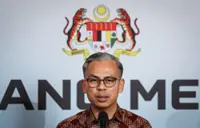PETALING JAYA: Malaysia’s workforce is greying as older workers take up a growing share of the labour market.
According to data from the Statistics Department (DOSM), the number of workers aged 50 and above has gone up from 1.9 million (14.7% of the labour force) in 2011 to 2.6 million (15.8%) in 2023.
As of December last year, formal sector workers aged 50 and above were largely employed in the service sector (688,700 persons), followed by manufacturing (202,000 persons) and construction (111,700 persons).
ALSO READ:
“This trend has led to the rise of the multigenerational workforce,” said Chai Sen Tyng, a senior researcher at Universiti Putra Malaysia’s Malaysian Research Institute on Ageing.
A multigenerational workforce is a workplace with employees from multiple generations, ranging from Baby Boomers (those born from 1946-1964) to Generation Z (1997-2012).
Chai added that the country’s ageing population is among the reasons why the labour force is greying.
Another reason is the rising retirement age.
“The increasing number of people in the labour force aged 50 and above was also due to the effect of the increase in minimum retirement age passed in 2012, from 55 to 60,” said Chai.
DOSM’s data shows that the share of workers aged between 50 and 54 declined to 47.9% in 2023 compared to 52.1% in 2011.
However, the share of workers aged between 55 and 59 grew, from 31.2% in 2011 to 34.1% in 2023.
The share of workers aged between 60 and 64 also went up, from 16.8% to 18%.
DOSM categorises Malaysia as an ageing nation, with those aged 60 and above making up 11.6% (3.9 million) of the 34.1 million population last year.
The United Nations, meanwhile, defines an ageing country as one where 7% of the population is aged 65 and above.
According to the UN, a country becomes an aged society when more than 14% of the population is 65 and above.
When those aged 65 and above make up 20% of the population, a country will then reach super-aged status.
In 1970, only 5.5% of the Malaysian population was over the age of 60 while those below the age of 14 made up 44.5%.
By last year, the share of people below the age of 14 had fallen to 22.2% while those over the age of 60 grew to 11.6%.
According to DOSM’s projections, the share of the population aged 60 and above will continue to rise to 23.4% by 2050.
Perak currently has the highest percentage of people aged 60 and above at 14.9%, followed by Sarawak (13.4%) and Kedah (13.3%) as of this year.






